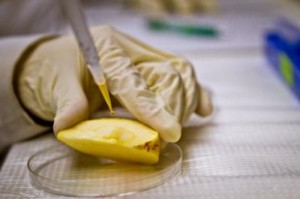
More evidence that low-calorie sweeteners are bad for your health
Studies show that artificial sweeteners can raise the risk of hypertension, metabolic syndrome, type 2 diabetes and heart disease, including stroke.

Natural Health News — Concerns over the use of silver nanoparticles as pesticides on fresh produce are growing.
Chief among these is that we are still uncertain of the impacts of nanoparticles in the human body and the environment and that it can be difficult to detect the presence of these toxins with conventional testing.
In a recent study, researchers at the University of Missouri claim to have developed a reliable method for detecting silver nanoparticles in fresh produce and other food products.
“More than 1,000 products on the market are nanotechnology-based products,” said Mengshi Lin, associate professor of food science in the MU College of Agriculture, Food and Natural Resources.
“This is a concern because we do not know the toxicity of the nanoparticles. Our goal is to detect, identify and quantify these nanoparticles in food and food products and study their toxicity as soon as possible.”
Complex technology
Lin and his colleagues used a combination of tests in their study: transmission electron microscopy (TEM), scanning electron microscopy (SEM), energy dispersive spectrometer (EDS) and inductively coupled plasma optical emission spectrometry (ICP-OES)
If it sounds like a mouthful of technology it is – but the properties of nanoparticles are such that no one single test will accurately tell us if they are present, how many are there, what their size, shape and structure is and how deeply the particles have penetrated the food. All of this data is important in understanding their potential toxicity.
You can’t rinse nanoparticles away
With this armoury of technology the research team studied the residue and penetration of silver nanoparticles on pear skin. First, the scientists immersed the pears in a silver nanoparticle solution similar to pesticide application. The pears were then washed and rinsed repeatedly.
Results showed that four days after the treatment and rinsing, silver nanoparticles were still attached to the skin, and the smaller particles were able to penetrate the skin and reach the pear pulp.
Health concerns
“The penetration of silver nanoparticles is dangerous to consumers because they have the ability to relocate in the human body after digestion,” Lin said. “Therefore, smaller nanoparticles may be more harmful to consumers than larger counterparts.”
According to the researchers the use of silver nanoparticles could harm the human body. When ingested, nanoparticles pass into the blood and lymph system, circulate through the body and reach potentially sensitive sites such as the spleen, brain, liver and heart.
More study is needed, they conclude, to better understand the contamination and penetration of different types of nanoparticles on other fruit, crops and agricultural products.

Please subscribe me to your newsletter mailing list. I have read the
privacy statement